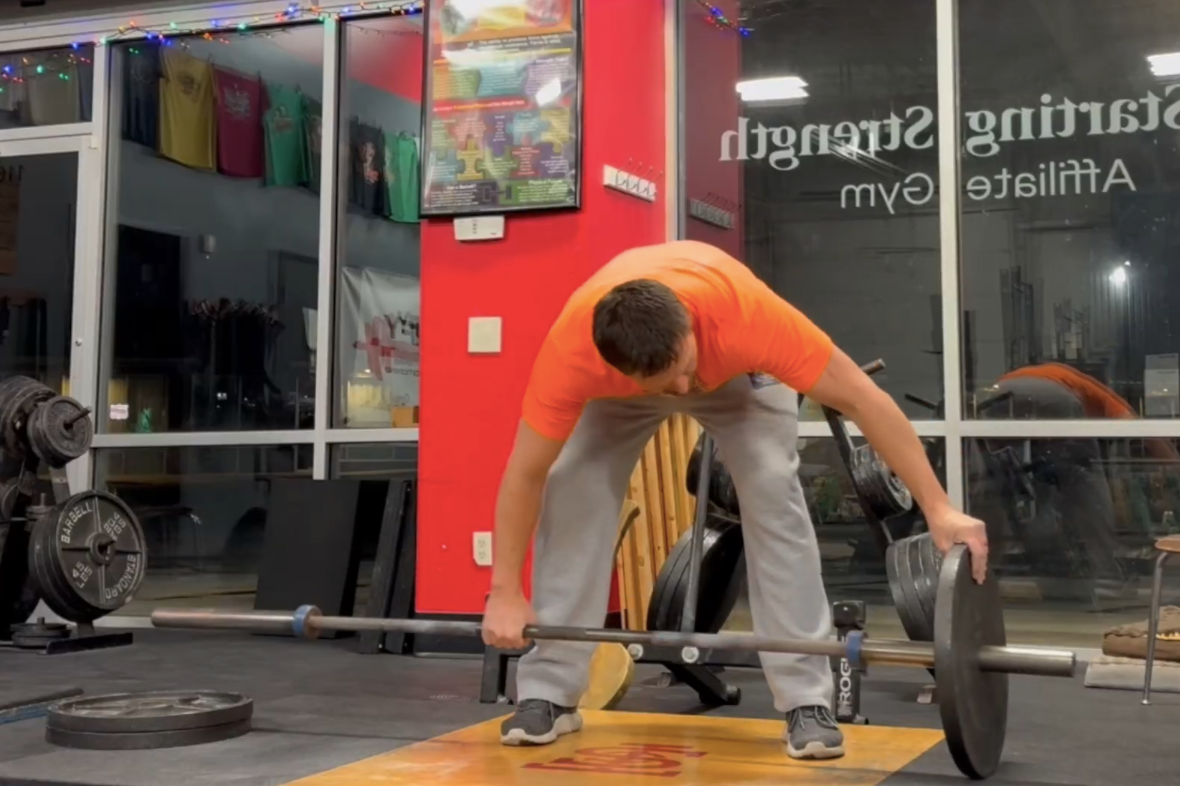No Deadlift Jack? THREE Tips for Loading Your Deadlift SUPER Easy
/Your deadlift is going well - you’re getting stronger. You’ve gotten to the point where you’ve got one, maybe two, perhaps even three 45-lb plates on each side.
What’s your reward?
You now have to deal with loading more full size plates (i.e., 45-lb metal plates) on the barbell each time you train, and this, of course, is a pain as you have to pick up the end of the bar enough to get the plate on and then slide it into place (the problem is even worse if you deadlift with bumper plates as most of your plates are full size plates).
Adding a 10-lb plate? A 25-lb plate? Piece of cake - they slide easily on as they are much smaller than a 45-lb plate. But those 45-lb plates? They can be a pain without knowing a few tricks of the trade, so let’s cover those right now to help you out.
Side note: If you have a deadlift jack, then loading 45-lb plates on the bar is smooth sailing. You can buy one, of course, or you can make The Fishhook deadlift jack as shown in the video above. It’s easy, and it makes loading your deadlifts easy as well.
If you don’t make or purchase a deadlift jack, then there are three specific problems to solve when loading your bar, and not surprisingly, there are three specific (but simple) solutions to use. We’ll cover them below, and if you’d like to see them demonstrated, check out the short video below (photos are great, but video is better).
Step #1: How to Get the First Plate on the Bar
In short, you don’t.
That is, you don’t put the plate (i.e., the 45-lb plate on the bar. Instead, you put the plate flat on the floor, put the end of the barbell sleeve into the center of the plate (Figure 1), tip the barbell back down to the floor, and then slide the bar through the plate (Figure 2).
figure 1: put the end of the barbell sleeve into the center of the plate.:
figure 2: slide the bar through the plate.
In other words, you don’t put the plate on the bar. You put the bar through the plate.
Step #2: How to Get the Second Plate on the Bar
This is the only step that requires a little bit of lifting, but you’re going to keep the effort involved as minimal as possible - after all, the deadlift itself is supposed to be your lifting for the day, not the loading of the bar.
First of all, keep the plate as close to the floor as possible - you can even roll it over to the bar if you don’t have much ground to cover. Situate the plate so it’s right next to the end of the bar.
Second, pick up the end of the bar and get the plate on the bar - but just barely. That’s all the lifting you’ll need to do.
figure 3: pull the plate toward the collar of the bar.
Next, straddle the bar (facing away from the middle of the bar), grab the plate (with both hands) just below the halfway mark, and then lean back as you pull the plate toward the collar of the bar (Figure 3). You’re essentially using your bodyweight as leverage to slide the plate toward you.
Step #3: How to Get the Rest of the Plates on the Bar
This is now the easiest part.
Grab a 2.5-lb plate (or another small, flat item), and roll one plate up onto the 2.5-lb plate. You’ve now elevated your barbell just enough that sliding subsequent plates onto the bar (Figure 4) will be no trouble at all since they won’t be sliding across the floor.
figure 4: Note that the inside plate is sitting on a 2.5-lb plate. this makes it easy to slide on subsequent plates.
This also works very well for unloading your bar when you’re done lifting.
As always, we hope this helps you get stronger and live better.
-Phil
PS: Whenever you want even more Testify in your life, here are some free resources:
Book a free intro and strategy session with us HERE.
Pick up a free copy of Testify’s Squat Guide: 12 Tips to Improve Your Squat Now HERE.
Get our free weekly email - containing useful videos, articles, and training tips - HERE.
Follow Testify on Instagram HERE.
Subscribe to Testify’s YouTube channel HERE.
(Some links may be affiliate links. As an Amazon Associate, Testify earns from qualifying purchases.)





